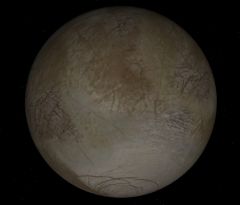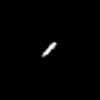Difference between revisions of "Ophelia"
m (Arvil moved page User:Arvil/Sandbox02 to Ophelia) |
(Added content.) |
||
| (4 intermediate revisions by the same user not shown) | |||
| Line 2: | Line 2: | ||
!bgcolor="lightsteelblue" colspan="2" align="center" |Ophelia | !bgcolor="lightsteelblue" colspan="2" align="center" |Ophelia | ||
|- | |- | ||
| − | |colspan="2" align="center"|[[Image:Ophelia- | + | |colspan="2" align="center"|[[Image:Ophelia-outerplanets060929basezip-Orbiter2006P1.jpg|240px]] |
|- | |- | ||
| − | |colspan="2" align="center"|<center>'''Ophelia from '' | + | |colspan="2" align="center"|<center>'''Ophelia from ''outer_planets-060929-base.zip'' in Orbiter 2006P1'''</center> |
|- | |- | ||
!bgcolor="lightsteelblue" colspan="2"|Designation | !bgcolor="lightsteelblue" colspan="2"|Designation | ||
| Line 14: | Line 14: | ||
!bgcolor="lightsteelblue" colspan="2"|Planetary mean orbits | !bgcolor="lightsteelblue" colspan="2"|Planetary mean orbits | ||
|- | |- | ||
| − | |width="30%"|Epoch||align="right" width="50%"| | + | |width="30%"|Epoch||align="right" width="50%"|2006.64779710751 |
|- | |- | ||
| − | |width="30%"|Semimajor axis (a)||align="right" width="50%"| | + | |width="30%"|Semimajor axis (a)||align="right" width="50%"|53839269.6336244 m |
|- | |- | ||
| − | |width="30%"|Eccentricity (e)||align="right" width="30%"|0. | + | |width="30%"|Eccentricity (e)||align="right" width="30%"|0.0092408654424444 |
|- | |- | ||
| − | |width="30%"|Inclination (i)||align="right" width="30%"| | + | |width="30%"|Inclination (i)||align="right" width="30%"|97.6217159833585° <br> (1.70382036535638 radian) |
|- | |- | ||
| − | |width="30%"|Longitude of the ascending node (LAN, ☊)||align="right" width="30%"| | + | |width="30%"|Longitude of the ascending node (LAN, ☊)||align="right" width="30%"|167.619454692741° <br> (2.92551137478579 radian) |
|- | |- | ||
| − | |width="30%"|Longitude of periapsis (ϖ)||align="right" width="30%"| | + | |width="30%"|Longitude of periapsis (ϖ)||align="right" width="30%"|325.284506644812° <br> (5.67728564667735 radian) |
|- | |- | ||
| − | |width="30%"|Mean longitude (L)||align="right" width="30%"| | + | |width="30%"|Mean longitude (L)||align="right" width="30%"|454.151737560438° <br> (7.92644312408284 radian) |
|- | |- | ||
!bgcolor="lightsteelblue" colspan="2"|Selected physical parameters | !bgcolor="lightsteelblue" colspan="2"|Selected physical parameters | ||
| Line 42: | Line 42: | ||
|width="30%"|LAN||align="right" width="30%"|2.9255 | |width="30%"|LAN||align="right" width="30%"|2.9255 | ||
|- | |- | ||
| − | |width="30%"|Note||align="right" width="30%"|*Elements given are from Ophelia.cfg ( | + | |width="30%"|Note||align="right" width="30%"|*Elements given are from Ophelia.cfg (outer_planets-060929-base.zip) |
|} | |} | ||
| Line 55: | Line 55: | ||
|- | |- | ||
!Add-on!!Source!!Version!!Author!!Type!!Release Date!!Compatibility!!Wiki article | !Add-on!!Source!!Version!!Author!!Type!!Release Date!!Compatibility!!Wiki article | ||
| + | |- | ||
| + | |[https://library.avsim.net/esearch.php?DLID=&Name=&FileName=outer_planets-060929-base.zip&Author=&CatID=root The Outer Planets 060929 Base]||AVSIM||||Rolf Keibel<br>Carl Romanik<br>Tony Dunn||Scenery||30 September 2006||Orbiter 2006-P1|| | ||
| + | |||
| + | |- | ||
| + | |[https://library.avsim.net/esearch.php?DLID=&Name=&FileName=outerplanets-050329_update.zip&Author=&CatID=root The Outer Planets 050329 Update]||AVSIM||050329||Rolf Keibel<br>Tony Dunn<br>Carl Romanik||Scenery||30 March 2005|||| | ||
| + | |- | ||
| + | |[https://library.avsim.net/esearch.php?DLID=&Name=&FileName=outerplanets-050125.zip&Author=&CatID=root The Outer Planets 050125]||AVSIM||050125||Rolf Keibel<br>Tony Dunn||Scenery||26 January 2005||Orbiter 2005-P1|| | ||
| + | |- | ||
| + | |[https://www.orbiter-forum.com/resources/uranus-minor-moons.1765/ Uranus Minor Moons]||O-F Resources||2004-12-14||Nighthawke||Scenery||14 December 2004|||| | ||
|- | |- | ||
|[https://library.avsim.net/esearch.php?DLID=&Name=&FileName=uranus.zip&Author=&CatID=root Uranus]||AVSIM||||Rolf Keibel||Scenery||5 November 2002|||| | |[https://library.avsim.net/esearch.php?DLID=&Name=&FileName=uranus.zip&Author=&CatID=root Uranus]||AVSIM||||Rolf Keibel||Scenery||5 November 2002|||| | ||
|} | |} | ||
| − | <gallery> | + | <gallery widths="100" heights="100"> |
Ophelia-uranuszip.jpg|<center>Ophelia from ''uranus.zip'' in Orbiter 2002</center> | Ophelia-uranuszip.jpg|<center>Ophelia from ''uranus.zip'' in Orbiter 2002</center> | ||
| + | Ophelia-UranusMoonszip-Orbiter2003P2.jpg|<center>Ophelia from ''UranusMoons.zip'' in Orbiter 2003P2 | ||
| + | Ophelia-outerplanets050125zip-Orbiter2005P1.jpg|<center>Ophelia from ''outerplanets-050125.zip'' in Orbiter 2005P1</center> | ||
| + | Ophelia-outerplanets060929basezip-Orbiter2006P1>jpg|<center>Ophelia from ''outer_planets-060929-base.zip'' in Orbiter 2006P1</center> | ||
Opheliamoon.png|<center>Ophelia as seen by [[w:Voyager 2|Voyager 2]]. The elongated appearance was due to the speed of Voyager as compared to Ophelia,<br>from Wikimedia Commons</center> | Opheliamoon.png|<center>Ophelia as seen by [[w:Voyager 2|Voyager 2]]. The elongated appearance was due to the speed of Voyager as compared to Ophelia,<br>from Wikimedia Commons</center> | ||
</gallery> | </gallery> | ||
| Line 69: | Line 81: | ||
[[Category:Articles]] | [[Category:Articles]] | ||
[[Category:Celestial bodies]] | [[Category:Celestial bodies]] | ||
| + | [[Category:Solar System]] | ||
[[Category:Natural satellites]] | [[Category:Natural satellites]] | ||
[[Category:Satellites of Uranus]] | [[Category:Satellites of Uranus]] | ||
{{Nsat-Stub}} | {{Nsat-Stub}} | ||
Latest revision as of 03:21, 17 October 2024
Ophelia (Uranus VII, S/1986 U 8) is one of the inner satellites of Uranus. It was discovered by the Voyager2 spacecraft in January 1986. It is named after the daughter of Polonius in Shakespeare's Hamlet.
Ophelia in Orbiter[edit]
Ophelia was first introduced into Orbiter with the add-on uranus.zip in November 2002.
| Add-on | Source | Version | Author | Type | Release Date | Compatibility | Wiki article |
|---|---|---|---|---|---|---|---|
| The Outer Planets 060929 Base | AVSIM | Rolf Keibel Carl Romanik Tony Dunn |
Scenery | 30 September 2006 | Orbiter 2006-P1 | ||
| The Outer Planets 050329 Update | AVSIM | 050329 | Rolf Keibel Tony Dunn Carl Romanik |
Scenery | 30 March 2005 | ||
| The Outer Planets 050125 | AVSIM | 050125 | Rolf Keibel Tony Dunn |
Scenery | 26 January 2005 | Orbiter 2005-P1 | |
| Uranus Minor Moons | O-F Resources | 2004-12-14 | Nighthawke | Scenery | 14 December 2004 | ||
| Uranus | AVSIM | Rolf Keibel | Scenery | 5 November 2002 | |||
Ophelia as seen by Voyager 2. The elongated appearance was due to the speed of Voyager as compared to Ophelia,
from Wikimedia Commons
| Uranus's natural satellites |
|---|
| Named Satellites:
Ariel | Belinda | Bianca | Caliban | Cordelia | Cressida | Cupid | Desdemona | Ferdinand | Francisco | Juliet | Mab | Margaret | Miranda | Oberon | Ophelia | Perdita | Portia | Prospero | Puck | Rosalind | Setebos | Stephano | Sycorax | Titania | Trinculo | Umbriel Numbered Satellites: |
| See also: Pronunciation key | rings of Uranus |
| edit The Solar System | |
|---|---|
| Central star |
Sun (Sol) |
| Planets |
Mercury - Venus - Earth - Mars - Jupiter - Saturn - Uranus - Neptune |
| Natural satellites |
Moon - Phobos - Deimos - Io - Europa - Ganymede - Titan - more... |
| Add-ons |
Planets - Dwarf Planets - Small objects - Natural satellites - Alternative star systems |
 | This natural satellite related article is a stub. You can help Orbiterwiki by expanding it.
|




